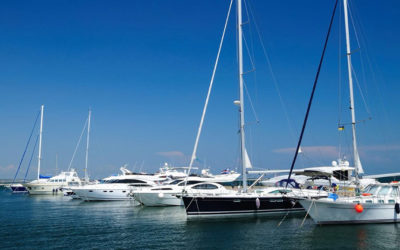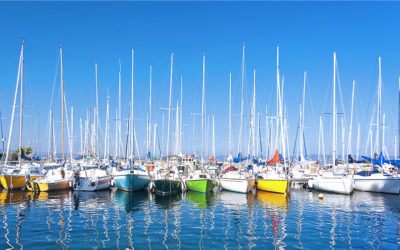Get an autopilot if you want smooth sailing! It’s a mechanical crew member that knows how to take the helm and stay on course for hours on end. Find out more about a “helping hand” that is always welcome…
Sommaire
1 – What bearing?
2 – Keep it handy!
3 – Simple or advanced
4 – Depends on the boat
5 – Batteries not included!
1. What bearing?
For those who don’t know what it is, an autopilot is a simple “hands-free” function that supposedly helps you go make yourself a coffee while the boat maintains course. In fact, it’s much more than that! Used properly, autopilots are genuine team players, enabling you to free yourself from the constraints of the helm so you can keep an eye on the sails or your course. It means that approach manoeuvres are much easier, especially if you’re sailing with minimal crew. Using an autopilot, it’s easy to keep an eye on the water, the bouyage and other boats or to get ready to land without being stuck at the helm.
In order for the boat to maintain course, you need to set a bearing. It can be magnetic or wind-based. When you set a magnetic bearing, the skipper tells the autopilot to maintain the current course.As soon as the boat deviates from this course, the autopilot activates the helm and corrects the course. This is perfect when sailing under power, but when you’re using sails, it will not be able to react to changes in the wind.
Become a motorboat owner
Are you planning to buy a motorboat?
Discover now the latest motorboats for sale!
2. Keep it handy!
Autopilots are mainly used when you’re sailing on your own or with a minimal crew, during crossings as well as departures and returns to port. It gives you real peace of mind when hoisting or trimming the sales, tucking in mooring lines and fenders, taking a look at a chart, etc.Ideally you want a remote control so you can change course from anywhere on board. With this little box around your neck, it’s easly to remote steer and adjust your course in increments of 1 or 10 degrees.
In addition to this, most of them have a “man overboard” function , which commands the boat to face the wind if the box moves more than ten metres away from the helm station. This is a safe way of ensuring your boat doesn’t sail off without you!
3. Simple or advanced
There are autopilots for all uses. The simplest are just jacks that form a hinge between the cockpit bench and the tiller. It’s easy to install these kinds of autopilots (they require only 2 fixed points and a power supply). Their price starts at around 500 Euros. . More full-featured models that interface with a helm station use information from the various sensors, including the windvane. This means they can offer you more extensive functions. The most advanced have a gyrometer that analyses the boat’s movements so you can use the autopilot more safely at downwind speeds, including under spinnaker.
4. Depends on the boat
When you choose an autopilot, you obviously need to make sure the power is compatible with the size of the boat, but you also need to know how responsive it is. The livelier the boat, the more you need an autopilot with a fast response time (4 seconds maximum from stop to stop.) On the other hand, a slower autopilot is suited to a unit with good course stability.
Become a boat owner
Are you looking for a boat?
Discover now the used boats for sale!
5. Batteries not included!
Having an autopilot doesn’t mean that you don’t have to tune your boat. Far from it! With each course correction, the autopilot uses up electric. The better balanced the boat is, the less work the autopilot has to do, which saves on batteries. This is why voyage boats are usually equipped with a windvane steering system in addition to the autopilot. This purely mechanical device consists of an aerial (a sort of windvane) which notes variations in wind direction and gets the boat back on course using a small rudder blade. It has the considerable advantage of not using any electricity, which is invaluable during long crossings.
As you can see, autopilots aren’t just for long-distance sailors! Even on a very small boat, they are very helpful in terms of safety and peace of mind including on day trips. Once you’ve tried this “helping hand”, you’ll never go back!
This article was written by Olivier Chauvin.

